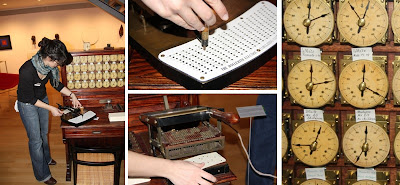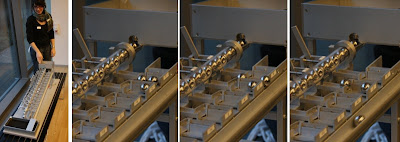This morning I was coming back from Munich* on the train I got a phone call from a journalist from Radio Essen (http://www.102.2radioessen.de/). As their studio is very close to the railways station in Essen I went there spontaneously before going back to University.

We talked a little about web services for students to rate their profs (e.g.
meinProf.de). The numbers of ratings most professors have received so far is extremely small (in comparison to the number of students we teach) and hence you get interesting effects that are far from representative or in many cases even meaningful. Last term I registered my course and we sent proactively a mail to all students who complete the course with the request to rate the lectures. This seems to be a good way to generate a positive selection 🙂
There are many of these services out – rating teachers, doctors, shops, etc. Thinking a little more about the whole concept of rating others one could image many interesting services – all of them creating a clear benefit (for someone) and a massive reduced privacy for others.
To make it more specific I offer you one idea: Rate your fellow students‘ professonal capabilities and academic performance. Students have typically a very good insight into the real qualities of their peers (e.g. technical skills, social compatibility, creativity, mental resilience, ability to cope with workload, diligence, honesty etc.). Having this information combined with the official degree (and the transcript the university offers) a potential employer would get a really interesting picture… We discussed this with students last term an the reactions were quite diverse – as one can image.>
Obviously such a service would create a lot of criticism (which lowers the cost of marketing) and one would have to carefully think in which countries it would be legal to run it. An interesting question would also be what verification one would employ to ensure that the ratings are real – or perhaps we would not need to care? Interested in the topic – perhaps we should get 5 people together implemented in a week and get rich 😉
The direction of such rating systems are taking is very clear – and it seems that they will come in many areas of our life. Perhaps there is some real research in it… how will these technology change the way we live together?
* travelling from Munich (leaving at 22:30) and arriving in Essen in the morning (or Darmstadt) works fairly well and if you stay in a hotel in Stuttgart 😉 – it is surprisingly a real alternative to a night train or an early morning flight…












